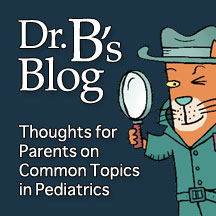This blog post is really for adolescent males. If you are a parent, copy the information or send a link to your son. Concerned aunts, uncles and grandparents can do the same thing.On May 14th, I wrote a blog about testicular torsion. [Link: http://howardjbennett.com/2012/05/14/have-you-ever-heard-of-testicular-torsion/] The purpose of the blog was to inform kids and parents about a serious condition that can happen at any age, but is more common in teens.
I educate all of my adolescent patients about testicular torsion so they will act quickly if they develop the sudden onset of testicular pain. I also encourage them to check their testicles on a monthly basis to look for other problems. They don’t always listen.A few months ago, I saw a 16-year-old for a routine checkup. During the genital exam, I found a large inguinal (groin) hernia. When I asked Jeremy (not his real name) how long the bulge had been present, he got quiet and said, “I’m not sure, four months maybe.”The reason Jeremy didn’t tell me about the swelling is because he had hoped it would go away. This is an example of denial, something that can happen to anyone. Males of all ages, but especially teenagers, are reluctant to report problems in this particular location.
I referred Jeremy to a surgeon who repaired the hernia without complications. But the take-home message is clear. If something else had been causing the swelling, such as testicular cancer, not telling anyone about it for months might have had a different outcome.
Although testicular cancer is rare (5.4 cases per 100,000 males), it is the most common cancer in males aged 15 to 39. Because the incidence of testicular cancer is low, there is disagreement among medical professionals regarding the value of monthly screening. That being said, the survival rate for Stage 1 testicular cancer is better than advanced disease.
The best time to do the exam is after a shower when the scrotum is relaxed.
- Examine one testicle at a time.
- Using gentle pressure, roll each testicle between your thumb and fingers. Testicles are egg-shaped and should feel smooth and firm. One may be slightly bigger than the other, but they should be about the same weight and consistency.
- Feel for small lumps, swelling, hardness or other changes in the shape of the testicle.
- The epididymis is a spongy, tube-like structure that is attached to the top and back of each testicle. It is a normal finding.
- If you notice a change in either testicle, see your doctor promptly.











